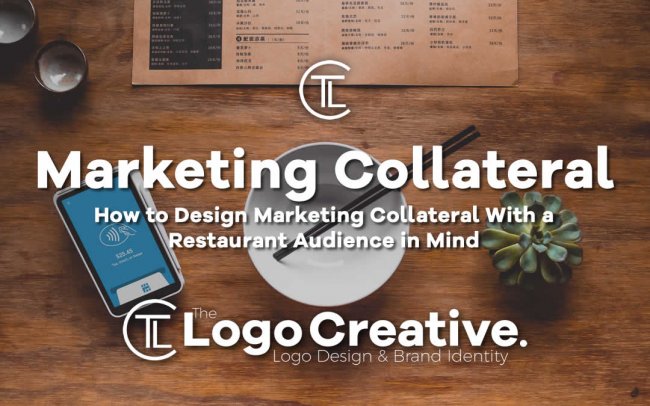If you take a look at the market leaders, the main element of their success is a great design, which is a base of branding. Any advertising campaign, logotype or brand book cannot be done without a designer. A good design attracts the attention immediately, it sets the brain in a “buying mode”, forms a base for a potential customer.
In contrast, a boring not well-executed design brings doubts, even if the product is great and reliable. Basically, the design is an important factor of product competitiveness and relevance, and it can affect customer behaviour as well.
Graphic design is art with a purpose. It involves a creative and systematic plan to solve a problem or achieve certain objectives, with the use of images, symbols or even words. It is visual communication and aesthetic expression of concepts and ideas using various graphic elements and tools
One of the major keys to success when it comes to marketing for any industry is to always make decisions with your audience in mind. You can’t start with an idea for a piece of collateral, fully design it, bring it to life and THEN consider the people who need to respond to it. Only by starting with those people and asking yourself “who are they? What do they need? What do they want? What do they hate? What do they love?” will you be able to design materials that check as many of these critical boxes as possible?
Case in point: a restaurant audience thinks very differently from something like a retail audience and you need to be aware of this at all times. If you want to design better, more effective and more compelling marketing collateral with your own particular restaurant audience in mind, there are a few key things you’ll want to consider.
Table of Contents
Integrate Your Digital and Your Print Campaigns Together
Most restaurants are in a constant state of flux. You’ve always got new specials that you want to promote, new events that you wait to raise awareness for, new menus that you’re trying to get people excited about, and more. Generally speaking, elements like this always move a bit faster than print marketing will allow… but with the right multichannel integration strategy, that doesn’t always have to be the case.
The next time you load up a flyer maker like Visme (which I founded) to design a piece of collateral letting people know the details about this week’s trivia night, be sure to also include a QR code that will instantly direct people to your Facebook, Twitter, Instagram or some other type of social media site. The print flyer will still act as a way to immediately let people know what you have coming up – but the integration with your digital efforts will make it easier for people to stay up-to-date with your restaurant in the future.
In other words, think of that flyer as a “first point of contact.” It’s the starting point for a long-term relationship, but the relationship itself just happens to carry on via other means. Rather than going all in on one or the other, or treating them as two totally separate marketing-related silos, you can consider them both sides of the same coin and leverage their power together.
Influencer Marketing for Restaurants
When you think about influencer marketing in a traditional online sense, you may not immediately assume that it’s anything you can leverage for your restaurant. However, you’d definitely be wrong – you just need to approach things from a slightly unique angle.
Traditional “influencer marketing” usually involves a brand paired with some type of celebrity-of-the-moment in an attempt to leverage their audience to your advantage. For your restaurant, you should use a service like Respona to find and reach out to local food bloggers and other influential people of that type.
Everyone has a blog these days – and those food critics who are already operating in your physical area are precisely the kinds of people you want to start paying attention to. Invite them to come try a few items from your menu in exchange for a review on their site, for example.
This type of restaurant-centric influencer marketing can even extend to other businesses, too. Don’t be afraid to reach out to other entrepreneurs in your area and offer to cater their company Christmas party or some other type of event for a significant discount – if you play your cards right, the steady stream of new customers (not to mention word of mouth) will more than make up for any “losses” you take over the course of the night in question.
Facebook Ads
Facebook ads are the most important and effective way to generate traffic flowing into the restaurant, BUT there needs to be a process for the ads.
Hire a photographer and videographer, capture amazing food and drink photos as well as interior/exterior photos of the restaurant. Create a 15 second, 30 second and 1 minute video highlighting the business.
Create teaser ads through Facebook ads manager promoting the upcoming launch of the business. If the restaurant is already open, run specific ads for specific day parts or promotions, ie brunch, happy hour, dinner, etc. Run different ad sets for each, targeting geographic areas (zip codes or radius) and different interest categories.
If you hire a great agency, they should be able to target your local restaurant competitor’s followings.
Run the video as an ad through Facebook and target a radius for video views with a wide age range target. Engagement with video is off the charts better than other types of ads.
Concentrate on these four areas and you will be successful
- Build your email list
- Consistently run Facebook ads promoting quality food and beverage photos with a call to action (make a reservation, book a party, etc)
- Use PR to drive many links to your website from quality publications online related to business and food.
- Use SEO to your advantage and capture organic traffic looking for group dining, private events, happy hour, brunch, etc.
Restaurant Marketing Begins With Listing Online
The most important thing to understand about these forums is that people can and will review you, even if you don’t set up an account. For that reason, as a restaurant owner you should absolutely be proactive and dress up your account at these sites, so it works for you, rather than against you.
This means adding as many details as possible, such as:
- Photos, and lots of ‘em
- Business hours
- Location
- Menu
- Price Range
- Wi-Fi/Outdoor Seating/Parking/etc.
The other big thing to keep in mind is how you handle feedback. It’s great to thank the reviewers for their review, whether positive or negative.
If you get negative feedback, always answer in a polite, professional manner. In a nutshell, try to always play the gracious host. If you’re responding to the negative review publicly, thank the reviewer for the feedback, apologize for the incident, and promise to improve in the future. You may also want to consider contacting the reviewer privately for more information about any negative incidents. Some restaurant owners offer a discount voucher to those who have had less than favourable experiences, hoping to get them back in the door for a second chance. I’ve seen this work in favour of many businesses, as reviewers are often flattered at the consideration shown and are more generous in their critique knowing the restaurant owner values their opinion and is working hard to improve. But be cautious. Do this only if you feel that the reviewer is a genuine customer and not a competitor’s seed.
How many marketing and advertising channels do you use to promote your Restaurant?
List your restaurant in every single local directory you find online. Like Urban spoon, Yellow pages, Truelocal, Bing local, Google my business, Yelp, Foursquare etc..
- Radio advertising.
- Direct mail.
- Email Marketing.
- Facebook advertising.
- Twitter advertising.
- Referral system in place.
- Rewards system in place.
Cloud POS system allows you to sync your customer base to your email marketing software so you can email them or mail them special offers and birthday gifts to improve and optimize your total customer value. By the way, you should study more about total customer value. Use menu psychology techniques in your menu design, pricing and format. If you can think of any other form of media to market your business on top of the above, you should do it. So yes you are in the marketing business my friend, once you realise that and embrace this truth you will have a very successful profitable restaurant indeed.
Finally, you should also understand that there is no type of marketing collateral that is somehow off the table just because you’re a restaurant and aren’t a more “traditional” business. Presentation software can be just as valuable to you as it can be to a retailer with the right context. As long as you use your marketing design to play to the strengths that make you unique, people are definitely going to pay attention – and that is a very exciting position to be in, rest assured.
 Author Bio
Author Bio
Payman Taei is the founder of Visme, an easy-to-use online tool to create engaging presentations, infographics, and other forms of visual content. He is also the founder of HindSite Interactive, an award-winning Maryland digital agency specializing in website design, user experience, and web app development.

